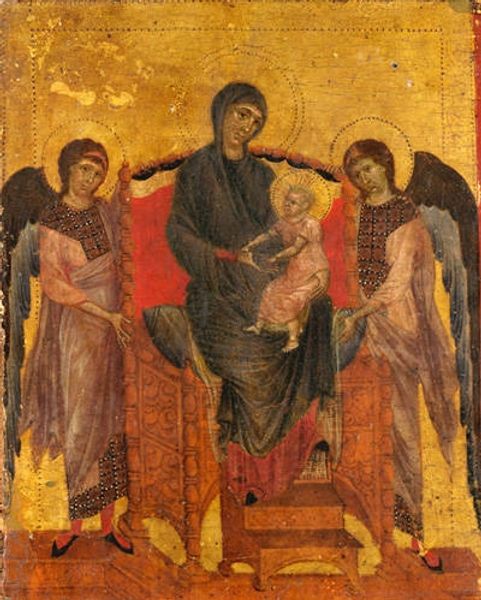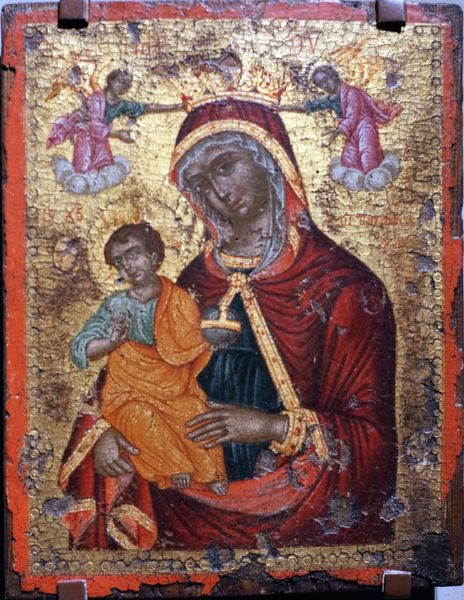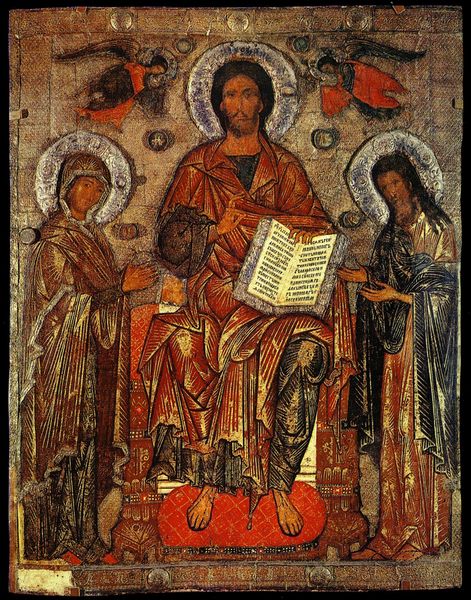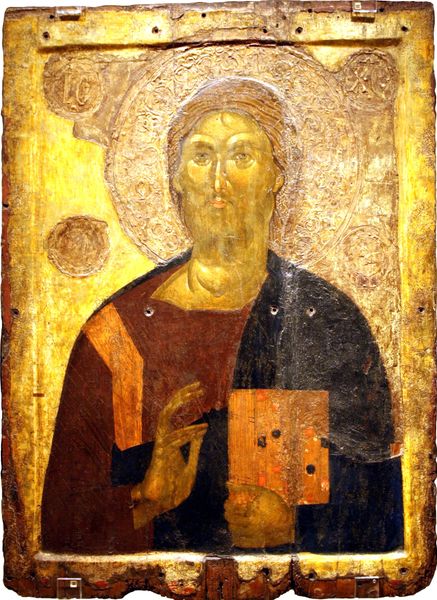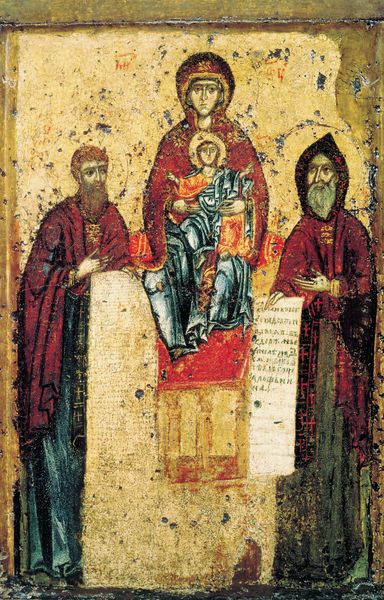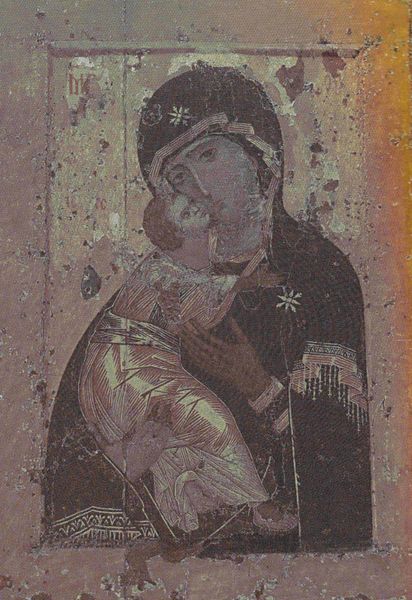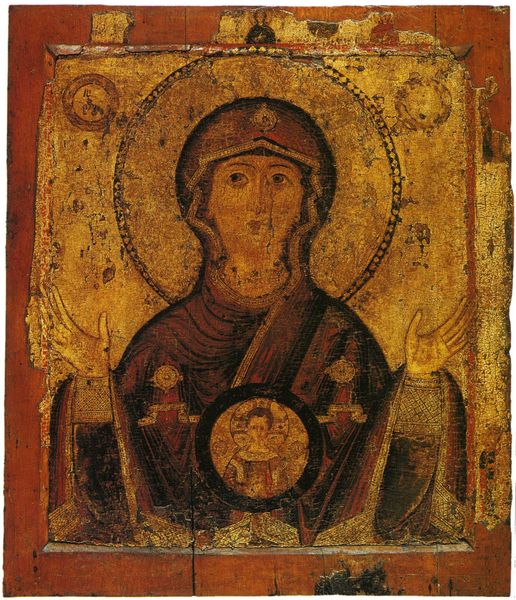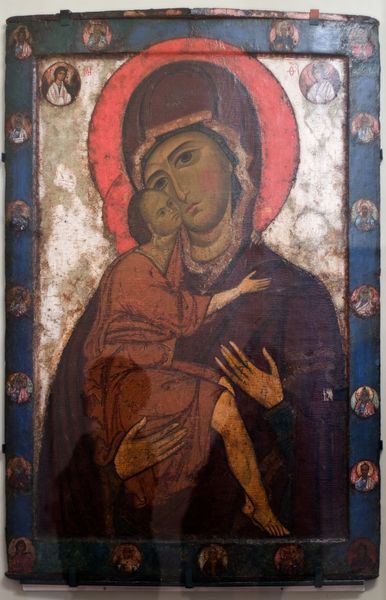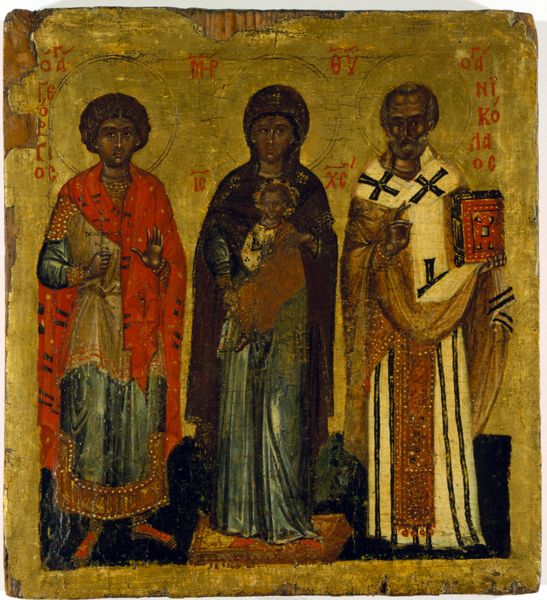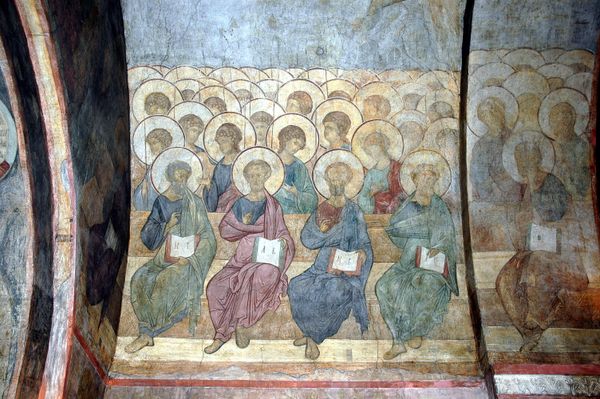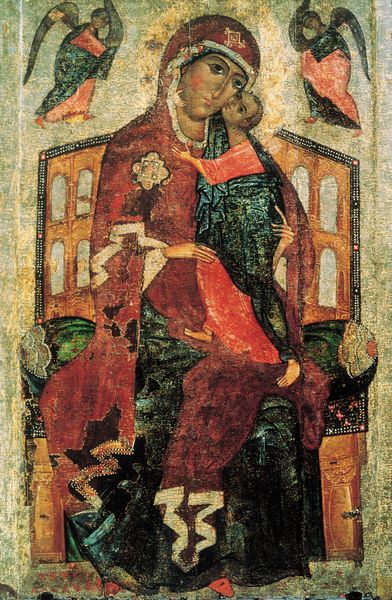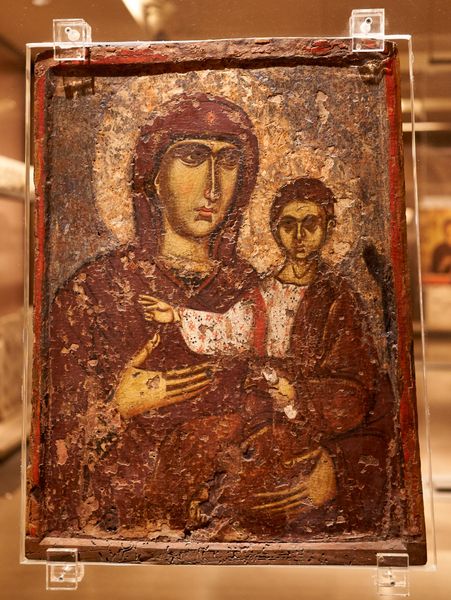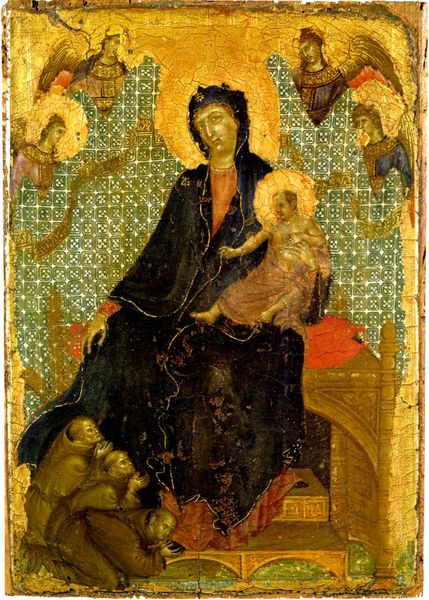
tempera, gouache
#
portrait
#
gouache
#
byzantine-art
#
medieval
#
tempera
#
gouache
#
figuration
#
history-painting
Copyright: Orthodox Icons,Fair Use
Editor: This tempera and gouache painting, "Mary Enthroned with two Saints," dates back to 1400. I find it intriguing how the figures, especially Mary, appear both regal and slightly detached, as if existing in a realm beyond earthly concerns. How do you interpret this work, especially concerning its historical and social contexts? Curator: I see this piece as deeply embedded in the power dynamics of its time. Mary’s central, enthroned position underscores the Church's authority and the divine right of rulership, but consider also how it intersects with ideas about female power, however constrained by patriarchal structures. Notice how her presentation also emphasizes idealized, almost unreachable standards for women within medieval society. Do you think the presence of the saints challenges or reinforces her status? Editor: That's a thought-provoking point. While the saints flank her, adding to her importance, their subservient stances could also imply a hierarchy, reinforcing Mary's elevated, perhaps unattainable, position. Curator: Exactly. Think about the social function of icons. They weren't just aesthetic objects; they were tools for shaping religious belief and social behavior. This painting promotes a particular vision of piety and gender roles. Let's consider the limited agency afforded to women during this era. The painting indirectly reinforces acceptable archetypes for women's identities during that historical and cultural moment. How does considering that limitation impact your view of the work? Editor: It makes me question whether Mary’s power is real, or merely symbolic, a projection of societal ideals onto a female figure. It gives a lot more complexity to the surface appearance of devotion. Curator: Precisely. And in that tension, we find a rich space for dialogue, a way to connect a 14th-century artwork with contemporary conversations about identity, representation, and power. Editor: I now appreciate the piece as more than just a religious icon. I see it as a reflection of the complex social and political landscape of the time, filled with constrained expectations of womanhood. Curator: Indeed. And by interrogating those contexts, we unlock new avenues for understanding its lasting impact.
Comments
No comments
Be the first to comment and join the conversation on the ultimate creative platform.
